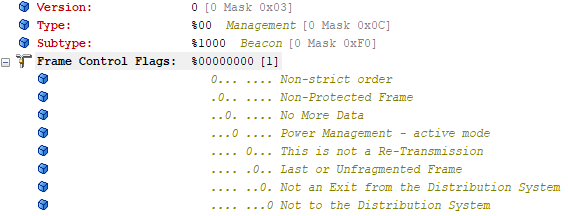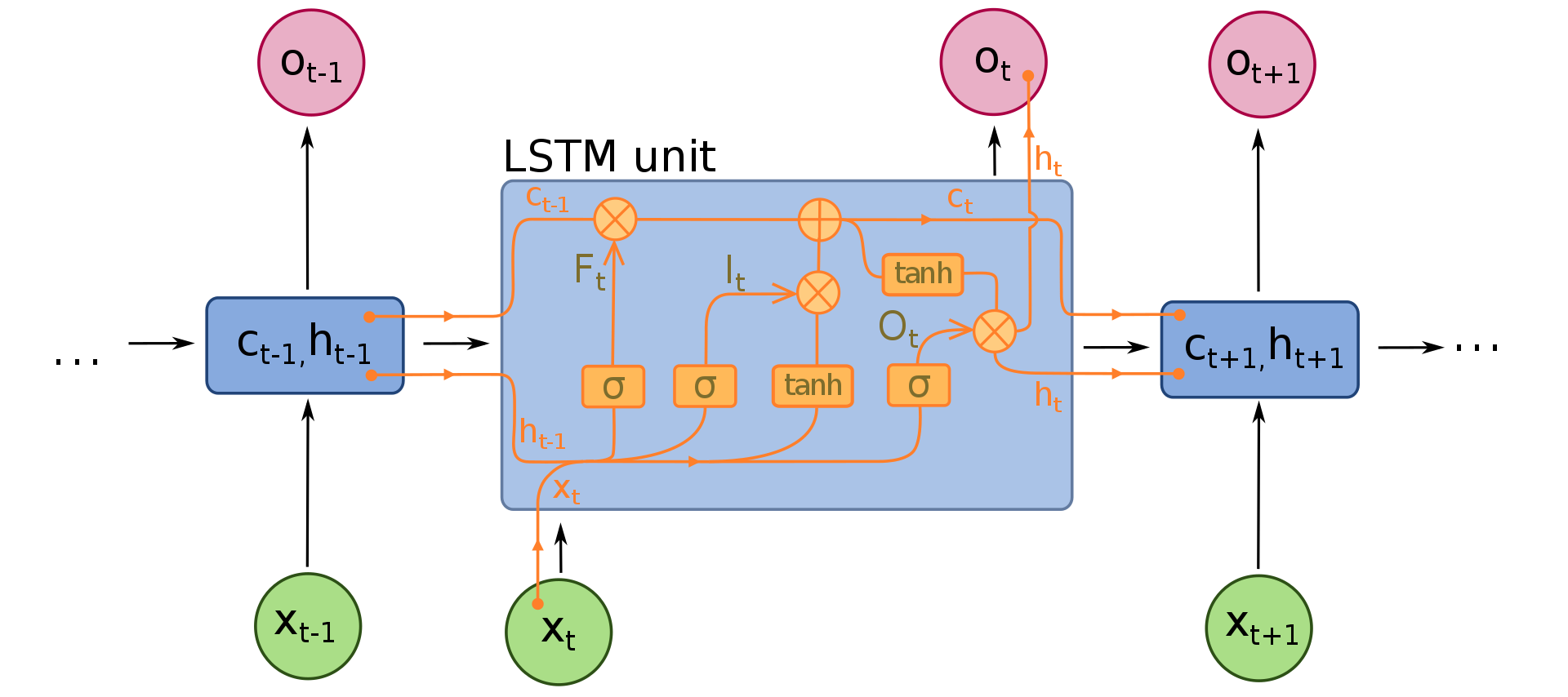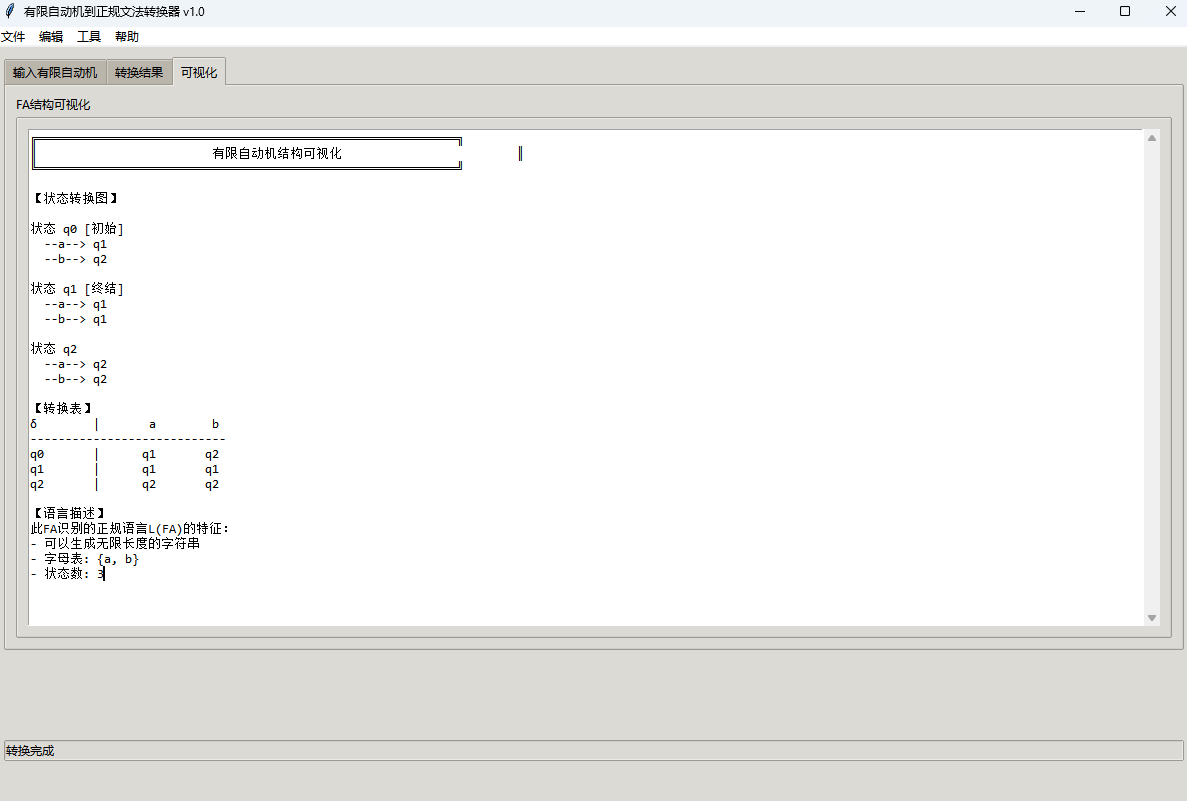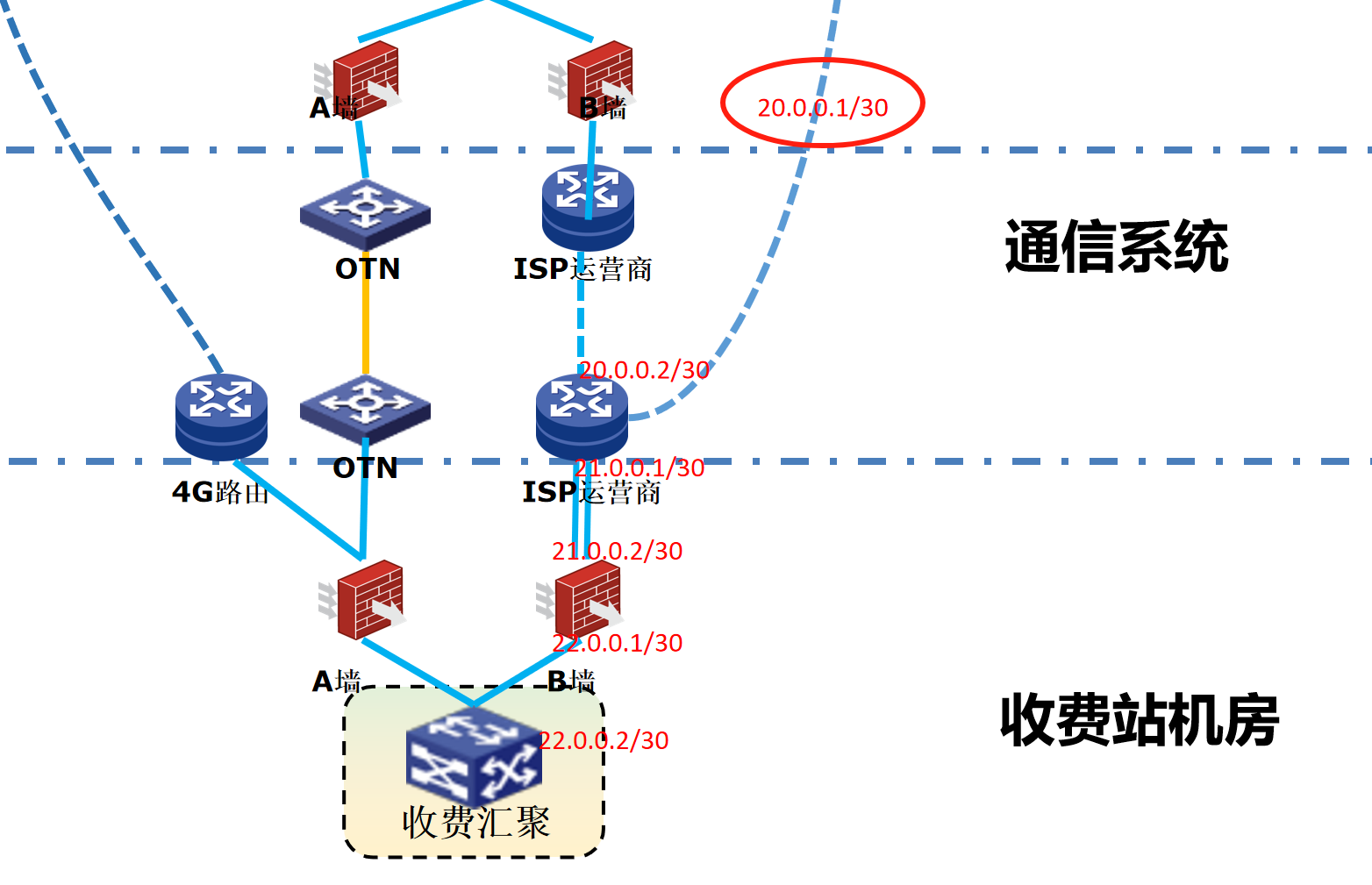20250225-代码笔记03-class CVRPModel AND other class
文章目录
- 前言
- 一、class CVRPModel(nn.Module):__init__(self, **model_params)
- 函数功能
- 函数代码
- 二、class CVRPModel(nn.Module):pre_forward(self, reset_state)
- 函数功能
- 函数代码
- 三、class CVRPModel(nn.Module):forward(self, state)
- 函数功能
- 函数代码
- 四、def _get_encoding(encoded_nodes, node_index_to_pick)
- 函数功能
- 函数代码
- 五、class CVRP_Encoder(nn.Module)
- 六、class EncoderLayer(nn.Module)
- 七、CVRP_Decoder(nn.Module)
- 八、def reshape_by_heads(qkv, head_num)
- 函数功能
- 函数代码
- 九、def multi_head_attention(q, k, v, rank2_ninf_mask=None, rank3_ninf_mask=None)
- 函数功能
- 函数代码
- 十、class AddAndInstanceNormalization(nn.Module):__init__(self, **model_params)
- 函数功能
- Batch Normalization (BN) 是什么?
- Batch Normalization 的具体操作
- 1. **计算均值和方差**
- 2. **标准化**
- 3. **缩放和平移**
- Batch Normalization 的优势
- 函数代码
- 十一、class AddAndInstanceNormalization(nn.Module):forward(self, input1, input2)
- 函数功能
- 函数代码
- 十二、class FeedForward(nn.Module):__init__(self, **model_params)
- 函数功能
- 函数代码
- 十三、class FeedForward(nn.Module):forward(self, input1)
- 函数功能
- 函数代码
- 附录
- 代码(全)
前言
学习代码:
class CVRPModel(nn.Module):
class CVRP_Encoder(nn.Module):
class EncoderLayer(nn.Module):
class CVRP_Decoder(nn.Module):
class AddAndInstanceNormalization(nn.Module):
class AddAndBatchNormalization(nn.Module):
class FeedForward(nn.Module):
/home/tang/RL_exa/NCO_code-main/single_objective/LCH-Regret/Regret-POMO/CVRP/POMO/CVRPModel.py
一、class CVRPModel(nn.Module):init(self, **model_params)
函数功能
init 是 CVRPModel 类的构造函数,负责初始化模型的各个组件。
主要任务包括:
- 接收和存储模型的参数(model_params)。
- 初始化编码器(encoder)和解码器(decoder)子模块。
- 初始化 encoded_nodes 变量,用于存储经过编码的节点数据。
执行流程图链接

函数代码
def __init__(self, **model_params):super().__init__()self.model_params = model_paramsself.encoder = CVRP_Encoder(**model_params)self.decoder = CVRP_Decoder(**model_params)self.encoded_nodes = None# shape: (batch, problem+1, EMBEDDING_DIM)二、class CVRPModel(nn.Module):pre_forward(self, reset_state)
函数功能
pre_forward 是 CVRPModel 类的一个前向传播前的准备函数。它的主要任务是根据给定的初始状态(reset_state)准备和编码数据,为模型的后续前向传播(forward)过程做准备。
具体来说,函数的作用是:
- 提取并处理初始状态的数据。
- 使用编码器对节点进行编码,得到编码后的节点表示。
- 为解码器设置额外的嵌入信息,并将编码后的节点与额外的嵌入信息拼接。
- 设置解码器中的 kv(key-value)信息,为解码过程做准备。
执行流程图链接

函数代码
def pre_forward(self, reset_state):depot_xy = reset_state.depot_xy# shape: (batch, 1, 2)node_xy = reset_state.node_xy# shape: (batch, problem, 2)node_demand = reset_state.node_demand# shape: (batch, problem)node_xy_demand = torch.cat((node_xy, node_demand[:, :, None]), dim=2)# shape: (batch, problem, 3)encoded_nodes = self.encoder(depot_xy, node_xy_demand)# shape: (batch, problem+1, embedding)_ = self.decoder.regret_embedding[None, None, :].expand(encoded_nodes.size(0), 1,self.decoder.regret_embedding.size(-1))# _ 的shape:(batch,1,embedding)self.encoded_nodes = torch.cat((encoded_nodes, _), dim=1)# self.encoded_nodes的shape:(batch,problem+2,embedding)self.decoder.set_kv(self.encoded_nodes)三、class CVRPModel(nn.Module):forward(self, state)
函数功能
forward 是 CVRPModel 类的核心前向传播函数,用于根据当前状态(state)生成模型的输出,包括选择的节点(selected)和相关的概率(prob)。
它的主要功能是基于当前的状态和历史选择来决定接下来应该选择哪个节点,并输出相应的概率。
执行流程图链接

函数代码
def forward(self, state):batch_size = state.BATCH_IDX.size(0)pomo_size = state.BATCH_IDX.size(1)if state.selected_count == 0: # First Move, depotselected = torch.zeros(size=(batch_size, pomo_size), dtype=torch.long)prob = torch.ones(size=(batch_size, pomo_size))# # Use Averaged encoded nodes for decoder input_1# encoded_nodes_mean = self.encoded_nodes.mean(dim=1, keepdim=True)# # shape: (batch, 1, embedding)# self.decoder.set_q1(encoded_nodes_mean)# Use encoded_depot for decoder input_2encoded_first_node = self.encoded_nodes[:, [0], :]# shape: (batch, 1, embedding)self.decoder.set_q2(encoded_first_node)elif state.selected_count == 1: # Second Move, POMOselected = torch.arange(start=1, end=pomo_size+1)[None, :].expand(batch_size, pomo_size)prob = torch.ones(size=(batch_size, pomo_size))else:encoded_last_node = _get_encoding(self.encoded_nodes, state.current_node)# shape: (batch, pomo, embedding)probs = self.decoder(encoded_last_node, state.load, ninf_mask=state.ninf_mask)# shape: (batch, pomo, problem+1)if self.training or self.model_params['eval_type'] == 'softmax':while True: # to fix pytorch.multinomial bug on selecting 0 probability elementswith torch.no_grad():selected = probs.reshape(batch_size * pomo_size, -1).multinomial(1) \.squeeze(dim=1).reshape(batch_size, pomo_size)# shape: (batch, pomo)prob = probs[state.BATCH_IDX, state.POMO_IDX, selected].reshape(batch_size, pomo_size)# shape: (batch, pomo)if (prob != 0).all():breakelse:probs=probs[:,:,:-1]selected = probs.argmax(dim=2)# shape: (batch, pomo)prob = None # value not needed. Can be anything.return selected, prob四、def _get_encoding(encoded_nodes, node_index_to_pick)
函数功能
_get_encoding 的作用是从 encoded_nodes 中按照 node_index_to_pick 选择相应的编码,并返回选中的编码信息。
函数执行流程图链接

函数代码
def _get_encoding(encoded_nodes, node_index_to_pick):# encoded_nodes.shape: (batch, problem, embedding)# node_index_to_pick.shape: (batch, pomo)batch_size = node_index_to_pick.size(0)pomo_size = node_index_to_pick.size(1)embedding_dim = encoded_nodes.size(2)gathering_index = node_index_to_pick[:, :, None].expand(batch_size, pomo_size, embedding_dim)# shape: (batch, pomo, embedding)picked_nodes = encoded_nodes.gather(dim=1, index=gathering_index)# shape: (batch, pomo, embedding)return picked_nodes五、class CVRP_Encoder(nn.Module)
笔记:20250226-代码笔记04-class CVRP_Encoder AND class EncoderLayer
六、class EncoderLayer(nn.Module)
笔记:20250226-代码笔记04-class CVRP_Encoder AND class EncoderLayer
七、CVRP_Decoder(nn.Module)
笔记:20250226-代码笔记05-class CVRP_Decoder
八、def reshape_by_heads(qkv, head_num)
函数功能
reshape_by_heads 函数的功能是将输入的张量(如查询 q, 键 k, 或值 v)从一个紧凑的多头结构 (batch, n, head_num * key_dim) 转换为适合多头注意力机制计算的结构 (batch, head_num, n, key_dim)。
此操作将多个注意力头的维度进行拆分,并将其调整为每个头独立计算的格式。
执行流程图链接

函数代码
def reshape_by_heads(qkv, head_num):# q.shape: (batch, n, head_num*key_dim) : n can be either 1 or PROBLEM_SIZEbatch_s = qkv.size(0)n = qkv.size(1)q_reshaped = qkv.reshape(batch_s, n, head_num, -1)# shape: (batch, n, head_num, key_dim)q_transposed = q_reshaped.transpose(1, 2)# shape: (batch, head_num, n, key_dim)return q_transposed九、def multi_head_attention(q, k, v, rank2_ninf_mask=None, rank3_ninf_mask=None)
函数功能
multi_head_attention 函数的主要功能是实现 多头注意力机制。该函数接收查询(Q)、键(K)和值(V),并计算多头注意力输出。它通过计算查询与键之间的相似度,生成加权值的结果,并结合所有头的输出生成最终的注意力表示。
执行流程图链接

函数代码
def multi_head_attention(q, k, v, rank2_ninf_mask=None, rank3_ninf_mask=None):# q shape: (batch, head_num, n, key_dim) : n can be either 1 or PROBLEM_SIZE# k,v shape: (batch, head_num, problem, key_dim)# rank2_ninf_mask.shape: (batch, problem)# rank3_ninf_mask.shape: (batch, group, problem)batch_s = q.size(0)head_num = q.size(1)n = q.size(2)key_dim = q.size(3)input_s = k.size(2)score = torch.matmul(q, k.transpose(2, 3))# shape: (batch, head_num, n, problem)score_scaled = score / torch.sqrt(torch.tensor(key_dim, dtype=torch.float))if rank2_ninf_mask is not None:score_scaled = score_scaled + rank2_ninf_mask[:, None, None, :].expand(batch_s, head_num, n, input_s)if rank3_ninf_mask is not None:score_scaled = score_scaled + rank3_ninf_mask[:, None, :, :].expand(batch_s, head_num, n, input_s)weights = nn.Softmax(dim=3)(score_scaled)# shape: (batch, head_num, n, problem)out = torch.matmul(weights, v)# shape: (batch, head_num, n, key_dim)out_transposed = out.transpose(1, 2)# shape: (batch, n, head_num, key_dim)out_concat = out_transposed.reshape(batch_s, n, head_num * key_dim)# shape: (batch, n, head_num*key_dim)return out_concat十、class AddAndInstanceNormalization(nn.Module):init(self, **model_params)
函数功能
对输入数据进行基于嵌入维度的批量标准化操作,从而使得模型在训练过程中能够更好地收敛和提高稳定性。
Batch Normalization (BN) 是什么?
Batch Normalization (BN) 是一种在训练深度神经网络时常用的技术,它的目的是提高网络的训练速度、稳定性,并帮助避免梯度消失或爆炸问题。
Batch Normalization 操作的核心思想是对每一层的输入数据进行标准化,使得输入数据的均值接近 0,方差接近 1。这样可以避免激活函数输出过大或过小的问题,帮助优化过程更加稳定。
Batch Normalization 的具体操作
1. 计算均值和方差
对于一批输入样本(batch),在每个特征维度上计算均值和方差:
-
均值:
μ B = 1 m ∑ i = 1 m x i \mu_B = \frac{1}{m} \sum_{i=1}^{m} x_i μB=m1∑i=1mxi -
方差:
σ B 2 = 1 m ∑ i = 1 m ( x i − μ B ) 2 \sigma_B^2 = \frac{1}{m} \sum_{i=1}^{m} (x_i - \mu_B)^2 σB2=m1∑i=1m(xi−μB)2
其中, m m m 是一个批次中的样本数, x i x_i xi是每个样本的输入值。
2. 标准化
使用计算出的均值和方差将输入数据标准化,使得每个特征的均值为 0,方差为 1:
x ^ i = x i − μ B σ B 2 + ϵ \hat{x}_i = \frac{x_i - \mu_B}{\sqrt{\sigma_B^2 + \epsilon}} x^i=σB2+ϵxi−μB
这里 ϵ \epsilon ϵ是一个非常小的数值,用来防止除以零的情况。
3. 缩放和平移
由于标准化可能会影响到模型的表达能力,Batch Normalization 还会引入两个可学习的参数 γ \gamma γ(缩放参数)和 β \beta β(平移参数),它们允许模型重新调整标准化后的数据:
y i = γ x ^ i + β y_i = \gamma \hat{x}_i + \beta yi=γx^i+β
其中, γ \gamma γ 和 β \beta β是学习的参数,通常会通过反向传播进行优化。
Batch Normalization 的优势
- 加速训练:Batch Normalization 通过减少输入数据的偏移(internal covariate shift),使得每一层的输入分布更加稳定,从而加速了网络的训练过程。
- 提高稳定性:由于它通过标准化输入避免了梯度爆炸或梯度消失问题,使得训练更加稳定。
- 缓解过拟合:在一些情况下,Batch Normalization 也可以起到正则化的作用,减少了模型对训练数据的过拟合。
- 减少对初始化的依赖:Batch Normalization 可以在一定程度上缓解对权重初始化的敏感性。
函数代码
def __init__(self, **model_params):super().__init__()embedding_dim = model_params['embedding_dim']self.norm = nn.InstanceNorm1d(embedding_dim, affine=True, track_running_stats=False)十一、class AddAndInstanceNormalization(nn.Module):forward(self, input1, input2)
函数功能
forward 方法,它执行了加法和批量归一化操作。
forward 方法的主要功能是:
- 加法操作:将两个输入张量
input1和input2相加。 - 批量归一化:将加法结果进行批量归一化(Batch Normalization),标准化其特征维度。
- 形状恢复:批量归一化后,将张量的形状恢复到原来的维度。
执行流程:
函数代码
- 获取输入张量的维度:
batch_s = input1.size(0)
problem_s = input1.size(1)
embedding_dim = input1.size(2)batch_s表示批次大小,problem_s表示问题的大小(特征的数量),embedding_dim表示嵌入的维度。- 这些维度来自输入张量
input1,并且假设input2具有相同的形状。
- 加法操作:
added = input1 + input2- 对
input1和nput2进行逐元素加法。此时,added张量的形状与input1和input2相同,仍为(batch_s, problem_s, embedding_dim)。
- 批量归一化:
normalized = self.norm_by_EMB(added.reshape(batch_s * problem_s, embedding_dim))- 将
added张量的形状重塑为(batch_s * problem_s, embedding_dim),将批次维度和问题维度合并,以便进行批量归一化操作。这样就对每个特征维度(embedding_dim)做了批量标准化。 self.norm_by_EMB是一个BatchNorm1d层,它会对每个特征维度执行标准化,使得每个特征的均值接近 0,方差接近 1。
- 恢复形状:
back_trans = normalized.reshape(batch_s, problem_s, embedding_dim)- 批量归一化后,将
normalized张量的形状恢复回(batch_s, problem_s, embedding_dim),即恢复原本的输入形状。
- 返回结果:
return back_trans- 返回经过批量归一化的张量
back_trans,它的形状与输入相同,并且每个特征维度已经经过标准化。
def forward(self, input1, input2):# input.shape: (batch, problem, embedding)added = input1 + input2# shape: (batch, problem, embedding)transposed = added.transpose(1, 2)# shape: (batch, embedding, problem)normalized = self.norm(transposed)# shape: (batch, embedding, problem)back_trans = normalized.transpose(1, 2)# shape: (batch, problem, embedding)return back_trans十二、class FeedForward(nn.Module):init(self, **model_params)
函数功能
FeedForward 的类,它是一个典型的前馈神经网络(Feedforward Neural Network)模块,实现了一个简单的两层神经网络。
__init__方法是类的构造函数,用来初始化网络的层和超参数。embedding_dim和ff_hidden_dim是通过model_params传递的超参数,分别表示嵌入维度和前馈神经网络隐藏层的维度。embedding_dim是输入和输出的维度。ff_hidden_dim是隐藏层的维度,即在网络的中间层。
self.W1和self.W2是两个全连接层(nn.Linear):self.W1将输入的embedding_dim维度的向量转换为ff_hidden_dim维度的向量。self.W2将ff_hidden_dim维度的向量转换回embedding_dim维度的向量。
函数代码
def __init__(self, **model_params):super().__init__()embedding_dim = model_params['embedding_dim']ff_hidden_dim = model_params['ff_hidden_dim']self.W1 = nn.Linear(embedding_dim, ff_hidden_dim)self.W2 = nn.Linear(ff_hidden_dim, embedding_dim)十三、class FeedForward(nn.Module):forward(self, input1)
函数功能
forward方法定义了数据流通过网络的方式,也就是前向传播过程。- 输入
input1的形状为(batch, problem, embedding),即批次大小batch、问题数量problem和每个问题的嵌入维度embedding。 - 执行的步骤如下:
-
1.第一层线性变换(
self.W1):输入通过self.W1进行线性变换,将输入的嵌入维度转换为隐藏层的维度(ff_hidden_dim)。变换公式为:

其中x是输入,W1是权重矩阵,b1是偏置。 -
2.激活函数(ReLU):对
self.W1的输出应用 ReLU 激活函数,ReLU 将负值归零,保留正值。公式为:

-
3.第二层线性变换(
self.W2):通过self.W2进行线性变换,将隐藏层的输出转换回原始的嵌入维度(embedding_dim)。变换公式为:

-
- 最终输出是经过两层线性变换和 ReLU 激活函数处理的结果,形状仍然是 (batch, problem, embedding)。
函数代码
def forward(self, input1):# input.shape: (batch, problem, embedding)return self.W2(F.relu(self.W1(input1)))
附录
代码(全)
import torch
import torch.nn as nn
import torch.nn.functional as Fclass CVRPModel(nn.Module):def __init__(self, **model_params):super().__init__()self.model_params = model_paramsself.encoder = CVRP_Encoder(**model_params)self.decoder = CVRP_Decoder(**model_params)self.encoded_nodes = None# shape: (batch, problem+1, EMBEDDING_DIM)def pre_forward(self, reset_state):depot_xy = reset_state.depot_xy# shape: (batch, 1, 2)node_xy = reset_state.node_xy# shape: (batch, problem, 2)node_demand = reset_state.node_demand# shape: (batch, problem)node_xy_demand = torch.cat((node_xy, node_demand[:, :, None]), dim=2)# shape: (batch, problem, 3)encoded_nodes = self.encoder(depot_xy, node_xy_demand)# shape: (batch, problem+1, embedding)_ = self.decoder.regret_embedding[None, None, :].expand(encoded_nodes.size(0), 1,self.decoder.regret_embedding.size(-1))# _ 的shape:(batch,1,embedding)self.encoded_nodes = torch.cat((encoded_nodes, _), dim=1)# self.encoded_nodes的shape:(batch,problem+2,embedding)self.decoder.set_kv(self.encoded_nodes)def forward(self, state):batch_size = state.BATCH_IDX.size(0)pomo_size = state.BATCH_IDX.size(1)if state.selected_count == 0: # First Move, depotselected = torch.zeros(size=(batch_size, pomo_size), dtype=torch.long)prob = torch.ones(size=(batch_size, pomo_size))# # Use Averaged encoded nodes for decoder input_1# encoded_nodes_mean = self.encoded_nodes.mean(dim=1, keepdim=True)# # shape: (batch, 1, embedding)# self.decoder.set_q1(encoded_nodes_mean)# Use encoded_depot for decoder input_2encoded_first_node = self.encoded_nodes[:, [0], :]# shape: (batch, 1, embedding)self.decoder.set_q2(encoded_first_node)elif state.selected_count == 1: # Second Move, POMOselected = torch.arange(start=1, end=pomo_size+1)[None, :].expand(batch_size, pomo_size)prob = torch.ones(size=(batch_size, pomo_size))else:encoded_last_node = _get_encoding(self.encoded_nodes, state.current_node)# shape: (batch, pomo, embedding)probs = self.decoder(encoded_last_node, state.load, ninf_mask=state.ninf_mask)# shape: (batch, pomo, problem+1)if self.training or self.model_params['eval_type'] == 'softmax':while True: # to fix pytorch.multinomial bug on selecting 0 probability elementswith torch.no_grad():selected = probs.reshape(batch_size * pomo_size, -1).multinomial(1) \.squeeze(dim=1).reshape(batch_size, pomo_size)# shape: (batch, pomo)prob = probs[state.BATCH_IDX, state.POMO_IDX, selected].reshape(batch_size, pomo_size)# shape: (batch, pomo)if (prob != 0).all():breakelse:probs=probs[:,:,:-1]selected = probs.argmax(dim=2)# shape: (batch, pomo)prob = None # value not needed. Can be anything.return selected, probdef _get_encoding(encoded_nodes, node_index_to_pick):# encoded_nodes.shape: (batch, problem, embedding)# node_index_to_pick.shape: (batch, pomo)batch_size = node_index_to_pick.size(0)pomo_size = node_index_to_pick.size(1)embedding_dim = encoded_nodes.size(2)gathering_index = node_index_to_pick[:, :, None].expand(batch_size, pomo_size, embedding_dim)# shape: (batch, pomo, embedding)picked_nodes = encoded_nodes.gather(dim=1, index=gathering_index)# shape: (batch, pomo, embedding)return picked_nodes########################################
# ENCODER
########################################class CVRP_Encoder(nn.Module):def __init__(self, **model_params):super().__init__()self.model_params = model_paramsembedding_dim = self.model_params['embedding_dim']encoder_layer_num = self.model_params['encoder_layer_num']self.embedding_depot = nn.Linear(2, embedding_dim)self.embedding_node = nn.Linear(3, embedding_dim)self.layers = nn.ModuleList([EncoderLayer(**model_params) for _ in range(encoder_layer_num)])def forward(self, depot_xy, node_xy_demand):# depot_xy.shape: (batch, 1, 2)# node_xy_demand.shape: (batch, problem, 3)embedded_depot = self.embedding_depot(depot_xy)# shape: (batch, 1, embedding)embedded_node = self.embedding_node(node_xy_demand)# shape: (batch, problem, embedding)out = torch.cat((embedded_depot, embedded_node), dim=1)# shape: (batch, problem+1, embedding)for layer in self.layers:out = layer(out)return out# shape: (batch, problem+1, embedding)class EncoderLayer(nn.Module):def __init__(self, **model_params):super().__init__()self.model_params = model_paramsembedding_dim = self.model_params['embedding_dim']head_num = self.model_params['head_num']qkv_dim = self.model_params['qkv_dim']self.Wq = nn.Linear(embedding_dim, head_num * qkv_dim, bias=False)self.Wk = nn.Linear(embedding_dim, head_num * qkv_dim, bias=False)self.Wv = nn.Linear(embedding_dim, head_num * qkv_dim, bias=False)self.multi_head_combine = nn.Linear(head_num * qkv_dim, embedding_dim)self.add_n_normalization_1 = AddAndInstanceNormalization(**model_params)self.feed_forward = FeedForward(**model_params)self.add_n_normalization_2 = AddAndInstanceNormalization(**model_params)def forward(self, input1):# input1.shape: (batch, problem+1, embedding)head_num = self.model_params['head_num']q = reshape_by_heads(self.Wq(input1), head_num=head_num)k = reshape_by_heads(self.Wk(input1), head_num=head_num)v = reshape_by_heads(self.Wv(input1), head_num=head_num)# qkv shape: (batch, head_num, problem, qkv_dim)out_concat = multi_head_attention(q, k, v)# shape: (batch, problem, head_num*qkv_dim)multi_head_out = self.multi_head_combine(out_concat)# shape: (batch, problem, embedding)out1 = self.add_n_normalization_1(input1, multi_head_out)out2 = self.feed_forward(out1)out3 = self.add_n_normalization_2(out1, out2)return out3# shape: (batch, problem, embedding)########################################
# DECODER
########################################class CVRP_Decoder(nn.Module):def __init__(self, **model_params):super().__init__()self.model_params = model_paramsembedding_dim = self.model_params['embedding_dim']head_num = self.model_params['head_num']qkv_dim = self.model_params['qkv_dim']# self.Wq_1 = nn.Linear(embedding_dim, head_num * qkv_dim, bias=False)self.Wq_2 = nn.Linear(embedding_dim, head_num * qkv_dim, bias=False)self.Wq_last = nn.Linear(embedding_dim+1, head_num * qkv_dim, bias=False)self.Wk = nn.Linear(embedding_dim, head_num * qkv_dim, bias=False)self.Wv = nn.Linear(embedding_dim, head_num * qkv_dim, bias=False)self.regret_embedding = nn.Parameter(torch.Tensor(embedding_dim))self.regret_embedding.data.uniform_(-1, 1)self.multi_head_combine = nn.Linear(head_num * qkv_dim, embedding_dim)self.k = None # saved key, for multi-head attentionself.v = None # saved value, for multi-head_attentionself.single_head_key = None # saved, for single-head attention# self.q1 = None # saved q1, for multi-head attentionself.q2 = None # saved q2, for multi-head attentiondef set_kv(self, encoded_nodes):# encoded_nodes.shape: (batch, problem+1, embedding)head_num = self.model_params['head_num']self.k = reshape_by_heads(self.Wk(encoded_nodes), head_num=head_num)self.v = reshape_by_heads(self.Wv(encoded_nodes), head_num=head_num)# shape: (batch, head_num, problem+1, qkv_dim)self.single_head_key = encoded_nodes.transpose(1, 2)# shape: (batch, embedding, problem+1)def set_q1(self, encoded_q1):# encoded_q.shape: (batch, n, embedding) # n can be 1 or pomohead_num = self.model_params['head_num']self.q1 = reshape_by_heads(self.Wq_1(encoded_q1), head_num=head_num)# shape: (batch, head_num, n, qkv_dim)def set_q2(self, encoded_q2):# encoded_q.shape: (batch, n, embedding) # n can be 1 or pomohead_num = self.model_params['head_num']self.q2 = reshape_by_heads(self.Wq_2(encoded_q2), head_num=head_num)# shape: (batch, head_num, n, qkv_dim)def forward(self, encoded_last_node, load, ninf_mask):# encoded_last_node.shape: (batch, pomo, embedding)# load.shape: (batch, pomo)# ninf_mask.shape: (batch, pomo, problem)head_num = self.model_params['head_num']# Multi-Head Attention#######################################################input_cat = torch.cat((encoded_last_node, load[:, :, None]), dim=2)# shape = (batch, group, EMBEDDING_DIM+1)q_last = reshape_by_heads(self.Wq_last(input_cat), head_num=head_num)# shape: (batch, head_num, pomo, qkv_dim)# q = self.q1 + self.q2 + q_last# # shape: (batch, head_num, pomo, qkv_dim)# q = q_last# shape: (batch, head_num, pomo, qkv_dim)q = self.q2 + q_last# # shape: (batch, head_num, pomo, qkv_dim)out_concat = multi_head_attention(q, self.k, self.v, rank3_ninf_mask=ninf_mask)# shape: (batch, pomo, head_num*qkv_dim)mh_atten_out = self.multi_head_combine(out_concat)# shape: (batch, pomo, embedding)# Single-Head Attention, for probability calculation#######################################################score = torch.matmul(mh_atten_out, self.single_head_key)# shape: (batch, pomo, problem)sqrt_embedding_dim = self.model_params['sqrt_embedding_dim']logit_clipping = self.model_params['logit_clipping']score_scaled = score / sqrt_embedding_dim# shape: (batch, pomo, problem)score_clipped = logit_clipping * torch.tanh(score_scaled)score_masked = score_clipped + ninf_maskprobs = F.softmax(score_masked, dim=2)# shape: (batch, pomo, problem)return probs########################################
# NN SUB CLASS / FUNCTIONS
########################################def reshape_by_heads(qkv, head_num):# q.shape: (batch, n, head_num*key_dim) : n can be either 1 or PROBLEM_SIZEbatch_s = qkv.size(0)n = qkv.size(1)q_reshaped = qkv.reshape(batch_s, n, head_num, -1)# shape: (batch, n, head_num, key_dim)q_transposed = q_reshaped.transpose(1, 2)# shape: (batch, head_num, n, key_dim)return q_transposeddef multi_head_attention(q, k, v, rank2_ninf_mask=None, rank3_ninf_mask=None):# q shape: (batch, head_num, n, key_dim) : n can be either 1 or PROBLEM_SIZE# k,v shape: (batch, head_num, problem, key_dim)# rank2_ninf_mask.shape: (batch, problem)# rank3_ninf_mask.shape: (batch, group, problem)batch_s = q.size(0)head_num = q.size(1)n = q.size(2)key_dim = q.size(3)input_s = k.size(2)score = torch.matmul(q, k.transpose(2, 3))# shape: (batch, head_num, n, problem)score_scaled = score / torch.sqrt(torch.tensor(key_dim, dtype=torch.float))if rank2_ninf_mask is not None:score_scaled = score_scaled + rank2_ninf_mask[:, None, None, :].expand(batch_s, head_num, n, input_s)if rank3_ninf_mask is not None:score_scaled = score_scaled + rank3_ninf_mask[:, None, :, :].expand(batch_s, head_num, n, input_s)weights = nn.Softmax(dim=3)(score_scaled)# shape: (batch, head_num, n, problem)out = torch.matmul(weights, v)# shape: (batch, head_num, n, key_dim)out_transposed = out.transpose(1, 2)# shape: (batch, n, head_num, key_dim)out_concat = out_transposed.reshape(batch_s, n, head_num * key_dim)# shape: (batch, n, head_num*key_dim)return out_concatclass AddAndInstanceNormalization(nn.Module):def __init__(self, **model_params):super().__init__()embedding_dim = model_params['embedding_dim']self.norm = nn.InstanceNorm1d(embedding_dim, affine=True, track_running_stats=False)def forward(self, input1, input2):# input.shape: (batch, problem, embedding)added = input1 + input2# shape: (batch, problem, embedding)transposed = added.transpose(1, 2)# shape: (batch, embedding, problem)normalized = self.norm(transposed)# shape: (batch, embedding, problem)back_trans = normalized.transpose(1, 2)# shape: (batch, problem, embedding)return back_transclass AddAndBatchNormalization(nn.Module):def __init__(self, **model_params):super().__init__()embedding_dim = model_params['embedding_dim']self.norm_by_EMB = nn.BatchNorm1d(embedding_dim, affine=True)# 'Funny' Batch_Norm, as it will normalized by EMB dimdef forward(self, input1, input2):# input.shape: (batch, problem, embedding)batch_s = input1.size(0)problem_s = input1.size(1)embedding_dim = input1.size(2)added = input1 + input2normalized = self.norm_by_EMB(added.reshape(batch_s * problem_s, embedding_dim))back_trans = normalized.reshape(batch_s, problem_s, embedding_dim)return back_transclass FeedForward(nn.Module):def __init__(self, **model_params):super().__init__()embedding_dim = model_params['embedding_dim']ff_hidden_dim = model_params['ff_hidden_dim']self.W1 = nn.Linear(embedding_dim, ff_hidden_dim)self.W2 = nn.Linear(ff_hidden_dim, embedding_dim)def forward(self, input1):# input.shape: (batch, problem, embedding)return self.W2(F.relu(self.W1(input1)))
相关文章:

20250225-代码笔记03-class CVRPModel AND other class
文章目录 前言一、class CVRPModel(nn.Module):__init__(self, **model_params)函数功能函数代码 二、class CVRPModel(nn.Module):pre_forward(self, reset_state)函数功能函数代码 三、class CVRPModel(nn.Module):forward(self, state)函数功能函数代码 四、def _get_encodi…...

【postman】postman找回接口数据
项目提测,一打开postman天塌了,所有接口都不见了。。。。conllection目录也看不见了,也导入不了同事给我发的json文件。 然后重新找同事要了一个安装包,覆盖安装了之后,在下面的目录里面找到了备份文件【C:\Users\yan…...

Milvus向量数据库部署
一、什么是Milvus Milvus 是一款开源的向量数据库,旨在帮助开发者轻松管理和检索大规模向量数据。它通过高效的索引技术,支持快速的相似度搜索,使得从海量数据中查找最接近的匹配变得简单而快捷。无论是构建推荐系统、进行图像识别还是分析自…...

显式 GC 的使用:留与去,如何选择?
目录 一、什么是显式 GC? (一) 垃圾回收的基本原理 (二)显式 GC 方法和行为 1. System.gc() 方法 2. 显式 GC 的行为 (三)显式 GC 的使用场景与风险 1. JVM 如何处理显式 GC 2. 显式 GC…...

探秘基带算法:从原理到5G时代的通信变革【二】Viterbi解码
文章目录 二、关键算法原理剖析2.1 Viterbi 解码2.1.1 卷积码与网格图基础**卷积码****网格图****生成多项式****理想情况下解码过程** 2.1.2 Viterbi 算法核心思想2.1.3 路径度量与状态转移机制2.1.4 算法流程与关键步骤详解2.1.5 译码算法举例与复杂度分析2.1.6 算法代码示例…...

从零实现高并发内存池
目录 一、项目介绍 二、什么是内存池? 1.池化技术 2.内存池 3.内存池解决的问题 三、malloc本身就是内存池 四、定长内存池 五、高并发内存池整体框架 六、thread cache 七、central cache 八、page cache 一、项目介绍 当前项目是实现一个高并发的内存池…...
学习笔记)
3-7 WPS JS宏 工作表移动复制实例-2(多工作簿的多工作表合并)学习笔记
************************************************************************************************************** 点击进入 -我要自学网-国内领先的专业视频教程学习网站 *******************************************************************************************…...

【计算机网络】考研复试高频知识点总结
文章目录 一、基础概念1、计算机⽹络的定义2、计算机⽹络的目标3、计算机⽹络的组成4、计算机⽹络的分类5、计算机⽹络的拓扑结构6、计算机⽹络的协议7、计算机⽹络的分层结构8、OSI 参考模型9、TCP/IP 参考模型10、五层协议体系结构 二、物理层1、物理层的功能2、传输媒体3、 …...

IDEA Tab 页设置多行显示
前言 日常编码中,经常需要在编辑器中同时打开多个文件,而在 IDEA 中,默认情况下,顶部的 Tab 页只显示一行,多余的文件会被隐藏起来,如下图所示: IDEA 默认 Tab 页只显示一行 这种情况下&#…...

Spark核心之02:常用算子详解
1、RDD操作详解 # 启动spark-shell spark-shell --master local[2] 1.1 基本转换 1) map map是对RDD中的每个元素都执行一个指定的函数来产生一个新的RDD。 任何原RDD中的元素在新RDD中都有且只有一个元素与之对应。 举例: scala> val a sc.parallelize(1 …...

Redis---LRU原理与算法实现
文章目录 LRU概念理解LRU原理基于HashMap和双向链表实现LRURedis中的LRU的实现LRU时钟淘汰策略近似LRU的实现LRU算法的优化 Redis LRU的核心代码逻辑Redis LRU的核心代码逻辑Redis LRU的配置参数Redis LRU的优缺点Redis LRU的优缺点 LRU概念理解 LRU(Least Recentl…...

matlab 包围盒中心匹配法实现点云粗配准
目录 一、算法原理1、原理概述2、参考文献二、代码实现三、结果展示1、初始位置2、配准结果本文由CSDN点云侠原创,原文链接,首发于:20255年3月3日。 一、算法原理 1、原理概述 包围盒中心匹配法是将源点云 P P P...

Mermaid语法介绍
一、基础语法 图表声明 使用 graph TD(自上而下)或 graph LR(从左到右)定义图表方向,节点间用箭头连接。例如: #mermaid-svg-WLayaaK0Ui6cKr5Z {font-family:"trebuchet ms",verdana,arial,sans…...

RHCE9.0版本笔记3:创建、查看和编辑文本文件
一、文件操作在RHCE中的核心地位 无论是配置系统服务(如httpd/sshd)、编写Ansible Playbook,还是分析日志文件,都离不开对文本文件的精确控制。 文件创建四大技法 1.快速创建空文件 # 标准创建方式 $ touch server.conf # 批量…...

VSCode知名主题带毒 安装量900万次
目前微软已经从 Visual Studio Marketplace 中删除非常流行的主题扩展 Material Theme Free 和 Material Theme Icons,微软称这些主题扩展包含恶意代码。 统计显示这些扩展程序的安装总次数近 900 万次,在微软实施删除后现在已安装这些扩展的开发者也会…...

deepseek、腾讯元宝deepseek R1、百度deepseekR1关系
分析与结论 区别与联系 技术基础与定制方向: DeepSeek官网R1版本:作为基础版本,通常保留通用性设计,适用于广泛的AI应用场景(如自然语言处理、数据分析等)。其优势在于技术原生性和官方直接支持。腾讯元宝…...

二、QT和驱动模块实现智能家居-----5、通过QT控制LED
在QT界面,我们要实现点击“LED”按钮就可以控制板子上的LED。LED接线图如下: 在Linux 系统里,我们可以使用2种方法去操作上面的LED: ① 使用GPIO SYSFS系统:这需要一定的硬件知识,需要设置引脚的方向、数值…...

基于Android平台的SOME/IP测试模块 EPT-ETS
在汽车产业智能化、网联化的时代浪潮中,汽车电子系统正经历着前所未有的变革。SOME/IP(Scalable service-Oriented MiddlewarE over IP)协议作为汽车电子通信领域的关键技术,其稳定性、可靠性与高效性对于整车性能的提升起着至关重…...

QT实现计算器
1:在注册登录的练习里面, 追加一个QListWidget 项目列表 要求:点击注册之后,将账号显示到 listWidget上面去 以及,在listWidget中双击某个账号的时候,将该账号删除 Widget.h #ifndef WIDGET_H #define…...

Go红队开发—语法补充
文章目录 错误控制使用自定义错误类型错误包装errors.Is 和 errors.Aspanic捕获、recover 、defer错误控制练习 接口结构体实现接口基本类型实现接口切片实现接口 接口练习Embed嵌入文件 之前有师傅问这个系列好像跟红队没啥关系,前几期确实没啥关系,因为…...

【WiFi帧结构】
文章目录 帧结构MAC头部管理帧 帧结构 Wi-Fi的帧分为三部分组成:MAC头部frame bodyFCS,其中MAC是固定格式的,frame body是可变长度。 MAC头部有frame control,duration,address1,address2,addre…...

PHP和Node.js哪个更爽?
先说结论,rust完胜。 php:laravel,swoole,webman,最开始在苏宁的时候写了几年php,当时觉得php真的是世界上最好的语言,因为当初活在舒适圈里,不愿意跳出来,就好比当初活在…...

多模态商品数据接口:融合图像、语音与文字的下一代商品详情体验
一、多模态商品数据接口的技术架构 (一)多模态数据融合引擎 跨模态语义对齐 通过Transformer架构实现图像、语音、文字的语义关联。例如,当用户上传一张“蓝色连衣裙”的图片时,接口可自动提取图像中的颜色(RGB值&…...

第25节 Node.js 断言测试
Node.js的assert模块主要用于编写程序的单元测试时使用,通过断言可以提早发现和排查出错误。 稳定性: 5 - 锁定 这个模块可用于应用的单元测试,通过 require(assert) 可以使用这个模块。 assert.fail(actual, expected, message, operator) 使用参数…...

NLP学习路线图(二十三):长短期记忆网络(LSTM)
在自然语言处理(NLP)领域,我们时刻面临着处理序列数据的核心挑战。无论是理解句子的结构、分析文本的情感,还是实现语言的翻译,都需要模型能够捕捉词语之间依时序产生的复杂依赖关系。传统的神经网络结构在处理这种序列依赖时显得力不从心,而循环神经网络(RNN) 曾被视为…...

有限自动机到正规文法转换器v1.0
1 项目简介 这是一个功能强大的有限自动机(Finite Automaton, FA)到正规文法(Regular Grammar)转换器,它配备了一个直观且完整的图形用户界面,使用户能够轻松地进行操作和观察。该程序基于编译原理中的经典…...

浪潮交换机配置track检测实现高速公路收费网络主备切换NQA
浪潮交换机track配置 项目背景高速网络拓扑网络情况分析通信线路收费网络路由 收费汇聚交换机相应配置收费汇聚track配置 项目背景 在实施省内一条高速公路时遇到的需求,本次涉及的主要是收费汇聚交换机的配置,浪潮网络设备在高速项目很少,通…...

JS手写代码篇----使用Promise封装AJAX请求
15、使用Promise封装AJAX请求 promise就有reject和resolve了,就不必写成功和失败的回调函数了 const BASEURL ./手写ajax/test.jsonfunction promiseAjax() {return new Promise((resolve, reject) > {const xhr new XMLHttpRequest();xhr.open("get&quo…...

RSS 2025|从说明书学习复杂机器人操作任务:NUS邵林团队提出全新机器人装配技能学习框架Manual2Skill
视觉语言模型(Vision-Language Models, VLMs),为真实环境中的机器人操作任务提供了极具潜力的解决方案。 尽管 VLMs 取得了显著进展,机器人仍难以胜任复杂的长时程任务(如家具装配),主要受限于人…...

MySQL 8.0 事务全面讲解
以下是一个结合两次回答的 MySQL 8.0 事务全面讲解,涵盖了事务的核心概念、操作示例、失败回滚、隔离级别、事务性 DDL 和 XA 事务等内容,并修正了查看隔离级别的命令。 MySQL 8.0 事务全面讲解 一、事务的核心概念(ACID) 事务是…...
